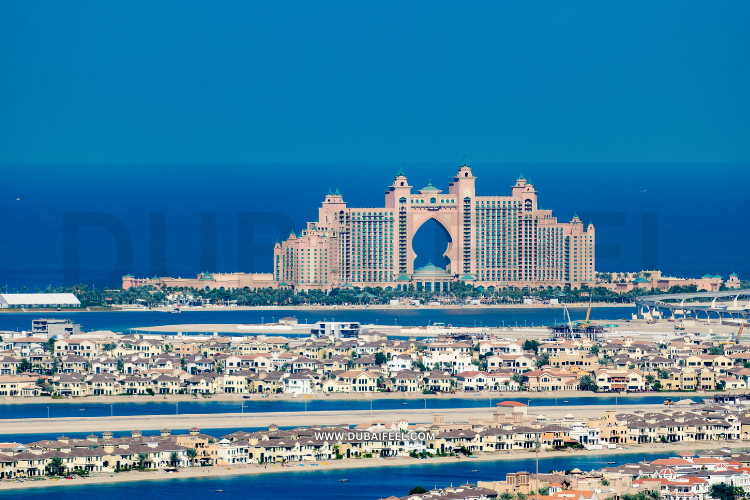- History in the Making: From a Small Fishing Village to a Global City
Once upon a time, nestled along the shimmering shores of the Arabian Gulf, there was a humble fishing village called Dubai. In the early 20th century, it was a quiet, tranquil settlement where the tides and the sun governed the rhythm of life. The villagers, predominantly pearl divers and fishermen, lived simple lives, their days woven together by the steady pull of the sea.
The village was small, its population no more than a few thousand souls, and its name whispered by the winds, known mainly to those who ventured along the ancient trade routes. Dubai’s existence, though modest, was deeply tied to the surrounding waters. The sea gave life in the form of fish and pearls, offering both sustenance and commerce.
Also raed :4 Reasons Dubai’s Public Transportation May Disappoint You
The Creek, which cuts through the city’s heart like an ancient vein, was the lifeblood of trade, bringing goods from far-flung lands and fostering relationships that transcended borders. In these early days, the natural world shaped the city with forces of patience, persistence, and the undulating ebb and flow of time. Yet, in the heart of the quiet village, something extraordinary stirred. In 1966, beneath the arid desert land, oil was discovered. This black gold, once elusive, now lay in abundance beneath the earth, waiting to be unearthed.
It was the discovery of oil that, like a dream emerging from the mist, transformed Dubai forever. With the discovery came the rapid rise of Dubai’s modern transformation. The once quaint fishing village quickly shed its skin and bloomed into a thriving metropolis. The people, who had once lived in the shadow of simple homes and boats, now looked up at towering cranes and gleaming skyscrapers.
Once small and isolated, the city became a magnet for innovation, business, and progress. Visionary and bold, Dubai’s leaders saw the city’s history not as something fixed in the past but as something to shape, mold, and create anew. Oil wealth fueled a spectacular transformation, and a new Dubai emerged. Its skyline grew with the same ambition that once drove the pearl divers into the depths of the sea.
Each building rose like a monument to human ambition, defying nature and expectation. The sands of time had shifted, and Dubai was no longer just a village on the map—it had become a global city, a beacon of modernity in the heart of the desert. But Dubai’s story is not merely one of wealth and progress but also resilience, adaptability, and a deep connection to its history.
As the city grew, it held on to its roots—the Bedouins’ spirit, the hospitality culture, and the sea traditions. The Creek that once carried wooden boats laden with fish and pearls now welcomes sleek yachts and luxury cruises, yet it remains a reminder of the past, a symbol of the city’s deep connection to its humble beginnings.
The history of Dubai is one of contrasts—the ancient and the modern, the traditional and the futuristic. It is a history written in the sand and the stone, etched into the towering structures that rise from the desert, and echoed in the voices of those who remember when Dubai was just a tiny fishing village. Today, it stands as a global city, a testament to the power of transformation and the beauty of dreaming beyond the horizon. A town that once looked to the sea for sustenance now looks to the sky, ever-reaching, ever-growing, always embracing the future.
1: Trading Roots: A Journey Through Dubai’s Rich Trading History
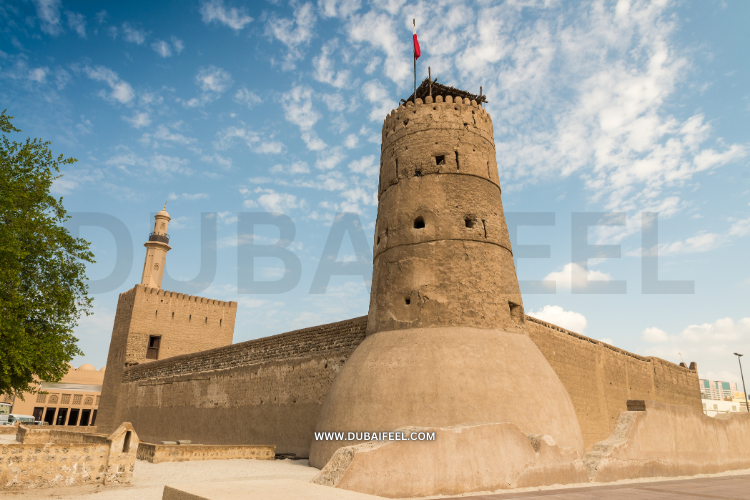
Long before the gleaming skyscrapers and vast shopping malls defined Dubai’s skyline, the hum of luxury cars and the clang of construction cranes became the soundtrack of progress, and a different rhythm existed in the heart of this desert city. The rhythm of the merchants, the pulse of commerce that beat through the city’s soul, is woven into its history.
In those early days, Dubai stood as a gateway to the East, where cultures met, exchanged goods, and stories passed hand in hand. Dubai’s strategic location between Europe, Africa, and Asia made it a natural crossroads for trade. A place where the winds of the desert met the trade winds of the sea, bringing exotic goods, rich spices, and silks from far-off lands.
Its position along the Arabian Gulf, nestled on the banks of the Dubai Creek, was a gift, a natural harbor where ships could dock safely, unloading treasures from across the world. Here, where the salty sea air mingled with the warm desert breeze, Dubai’s story as a trading hub began to unfold. In the 19th and early 20th centuries, the souks—those bustling markets of wood and stone—became the city’s beating heart. The air was thick with frankincense, myrrh, and spices from India, Africa, and the Far East.
The clang of metal and the hum of conversation blended into a symphony of commerce, where merchants haggled over precious pearls, delicate fabrics, and intricate jewelry. It was a time when trade was not just an exchange of goods but of cultures, ideas, and dreams. Traders from Persia, India, and even as far as Europe gathered in these markets, their stalls lined with items that told stories of distant lands. Each piece was not just an object but a part of a larger narrative of travel, discovery, and connection.
Also read :Dubai’s New Mega-Mall Attraction: 7 Reasons It’s a Must-Visit—And Why It Might Fall Short
The souks, with their winding alleyways and narrow passageways, became the beating pulse of the city. The city’s merchants, keen-eyed and quick-witted, knew how to trade, but more importantly, they understood how to build relationships—relationships that would span generations, creating bonds that reached beyond the exchange of goods. But Dubai’s trading history wasn’t confined to the souks.
The bustling ports and the harbors lined with ships from all corners of the globe were as much a part of the city’s identity as the markets themselves. Here, the city’s strategic location shone brightest. It wasn’t just a stop on the journey—it was the destination. With the rise of pearl diving as a significant industry, Dubai became one of the world’s most important centers for the pearl trade, where men dove into the depths of the sea, bringing up treasures to sell to buyers as far away as Japan and the Americas.
Through all of this, Dubai was shaping its destiny. The history of trade in this city is one of adaptability and resilience. The tides of history may have ebbed and flowed, but Dubai’s role as a center of commerce remained steadfast. The city embraced the ever-changing trade winds, adjusting its sails as new goods and opportunities arrived. It was a city that understood the value of connection, learning from those who came with goods and stories, and building a future grounded in the rich, diverse tapestry of its past.
Today, when you walk through the narrow alleys of the old souks, with their labyrinth of shops and stalls, you can still feel the whispers of history. The scent of spices in the air, the sparkle of gold under the sun, and the vibrant colors of fabrics—all serve as reminders of Dubai’s rich trading roots. Its history continues to shape the city today, as Dubai remains a global center of trade, a meeting point for cultures, and a testament to the enduring power of commerce.
2: The Burj Khalifa’s Rise: A Monument to Dubai’s Ambition
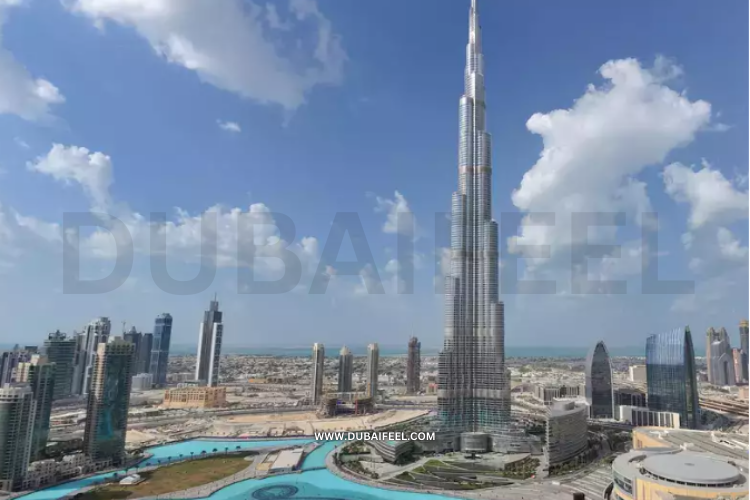
In the heart of the desert, where the winds whisper tales of time and sand stretches endlessly beneath an azure sky, a monument rose—a tower that touched the heavens, a silent testament to ambition, resilience, and the ceaseless drive to transcend limits. It is a living symbol of Dubai’s modern history, reflecting a city transforming from a modest fishing village to a global icon.
Rising like a giant needle from the earth, it pierces the clouds, holding within it the dreams of a city that dares to look beyond what is possible. It is the story of a vision conceived in the corridors of power and forged by the hands of thousands of workers. When construction began in 2004, the world could hardly fathom what was to come. In just five short years, the world would witness the rise of a grand, so ambitious structure that it would challenge the very definition of what a city could be.
A project that cost over $1.5 billion, the Burj Khalifa would stand as the world’s tallest building—a beacon of Dubai’s ever-growing influence and its ceaseless pursuit of greatness. To understand the history of the Burj Khalifa is to understand the spirit of Dubai itself. The city, known for its rapid transformation from a quiet pearl-diving port to a modern metropolis, had never shied away from the extraordinary.
From the first oil discovery to the vast shopping malls, artificial islands, and palm-shaped resorts, Dubai has continuously rewritten the rules of possibility. The Burj Khalifa, in many ways, was its crowning achievement, the culmination of a vision that sought to elevate the city’s skyline and place it firmly in the spotlight of the world.
At the heart of the project were over 12,000 workers, each a piece of the giant puzzle, working tirelessly under the burning desert sun.
As construction crews scaled the tower, brick by brick, steel beam by steel beam, the Burj Khalifa began to rise—a sleek monolith against the horizon. As the world watched, Dubai’s history unfolded one floor at a time, with each level of the Burj Khalifa marking another chapter in the city’s ongoing transformation.
With a height that stretches over 828 meters (2,717 feet), the tower is not just an architectural feat; it is a bold statement that echoes the city’s audacity to dream bigger, to rise higher, and to stretch beyond the clouds. The Burj Khalifa is a blend of art and engineering, an intricate dance of glass, steel, and concrete that defies gravity. Inspired by the desert flower Hymenocallis, its design is a homage to the area’s natural beauty.
At the same time, its slender, soaring shape suggests the power of the winds that sweep across the desert. At night, when the city below sparkles like a field of diamonds, the Burj Khalifa glows with the energy of possibility; it lights a beacon of Dubai’s unstoppable progress. But perhaps the true essence of the Burj Khalifa lies not in its size or grandeur but in the story it tells about the city that built it.
In every inch of its construction, on every floor that reaches toward the sky, we see the history of Dubai itself. This city has never been content to rest on its laurels, a town that has always sought to reinvent, push forward, and make history in ways that others can only dream of. Today, the Burj Khalifa symbolizes Dubai’s ambition, progress, and limitless future.
It is a monument that will endure for centuries, telling the story of a city that dared to dream beyond the stars—a place where history is written not in books but in the very structure that reaches towards the heavens.
3: Bedouin Influence: The Heartbeat of Dubai’s History
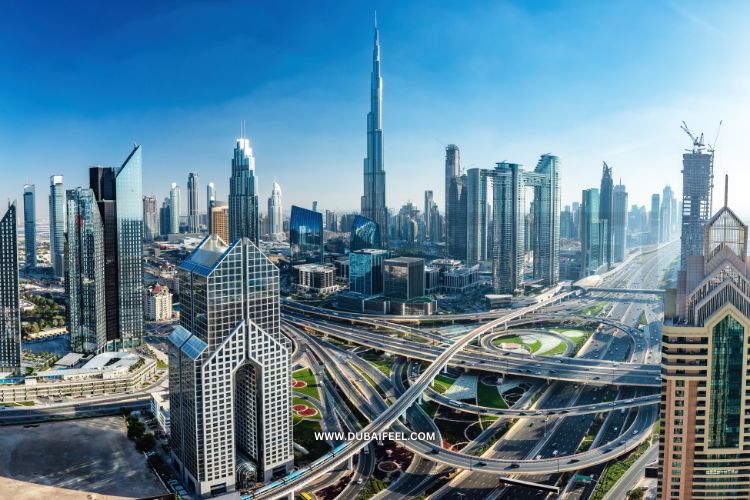
Long before the steel and glass towers of modern Dubai began to stretch towards the sky, before the shimmering sands gave way to luxury shopping malls and towering resorts, there existed a world of nomads—people of the desert whose lives were by the harsh rhythms of the arid landscape.
These were the Bedouins, the early settlers of the land that would one day become the glittering city of Dubai. Their legacy, woven deep into the city’s history, continues to shape its soul, customs, and identity. The Bedouin tribes were the first to call this place home, living in harmony with the land and adapting to the unforgiving desert environment.
They survived, adapted, and showed resilience; it is no wonder these values to the people of modern Dubai. With their nomadic way of life, the Bedouins learned to read the stars, to follow the whispers of the wind, and to navigate the vast, endless expanse of sand. To them, the desert was not a barren wasteland but a vast, living entity that demanded respect and understanding. Dubai, in its earliest days, was shaped by these resilient people.
The Bedouins settled along the banks of the Dubai Creek, where they relied on fishing, pearl diving, and trade for sustenance. But more than that, they brought a set of values, traditions, and customs that would anchor the city in its formative years. From them came the deep-rooted sense of hospitality that still defines the city today.
This tradition of hospitality still pulses through the streets of Dubai, where visitors from all over the world are welcomed with open arms, just as they were centuries ago. Another legacy Dubai owes to the Bedouins is the profound love for horses. In the desert, the horse was not merely a mode of transportation—it was a companion, a symbol of strength, grace, and freedom. Bedouins would breed, train, and care for their horses with unparalleled devotion, and this reverence for the animal has become a cornerstone of Dubai’s culture.
The relationship between the Bedouins and their horses was one of mutual respect, and that bond continues to echo in the city’s traditions. The Bedouins also laid the foundation for Dubai’s social structure. Their way of life, based on close-knit tribes and strong family ties, helped shape the city’s sense of community. Today, the values of loyalty, respect, and honor that the Bedouins held dear still guide Dubai’s social interactions.
The concept of family is sacred, and connections between people, whether they are blood relatives or close friends, are woven into the fabric of the city’s culture. As Dubai blossomed from a small fishing village into a global metropolis, the Bedouin influence did not fade; it continued to thrive, preserved in the city’s heart.
The impact of the desert people can be in the warmth of a handshake, the elegant tradition of falconry, and the timeless beauty of camel races. The city’s roots lie in the legacy of those who once roamed the dunes, and the echoes of their history still resonate in the hum of modern Dubai. In the glittering expanse of Dubai today, amidst its skyscrapers and shopping malls, the soul of the Bedouins lives on.
Their values, traditions, and way of life have not faded with time; they pulse as the city’s heartbeat. Dubai’s history is written in steel and glass and in the legacy of those who first called it home and continue to shape its identity, generation after generation.
4: The Creek’s Role in Dubai’s Growth: A River of History
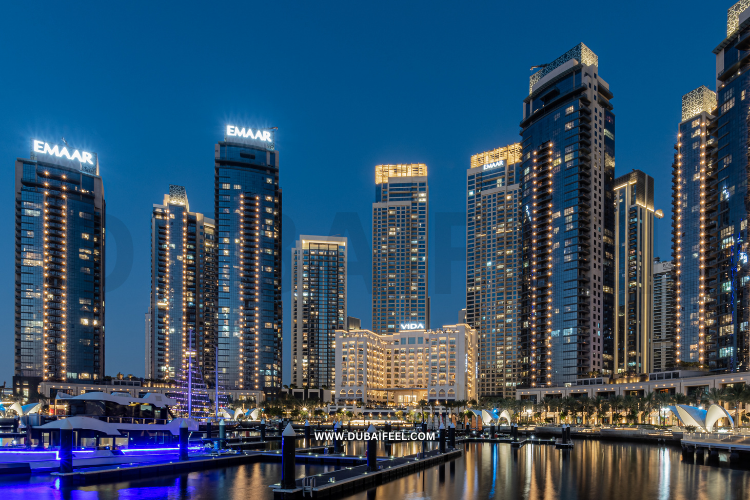
In the heart of Dubai, where the pulse of the city beats in rhythm with the flow of time, lies the Dubai Creek—a natural saltwater inlet winding its way through the city like a lifeline of history. Long before the gleaming skyscrapers and luxurious hotels, before the world’s tallest buildings pierced the sky, the Creek was the cradle of Dubai’s early development. It was here, along the waters’ edge, that Dubai’s history began to take shape, marking the beginning of its transformation from a quiet fishing village to a bustling trade hub.
The Creek was not just a waterway but the artery of commerce, the center of Dubai’s early economy. Merchants from all corners of the world sailed its waters, bringing with them silks, spices, pearls, and dreams. The aroma of incense and the chatter of traders filled the air as goods exchanged hands, and the city’s growth began in earnest.
The Creek was the meeting point of cultures, a place where East met West, goods flowed freely, and Dubai’s bustling souks were born. As the city grew, the importance of the Creek remained undeniable. Even with the discovery of oil in the 1960s, the Creek remained a historical and cultural landmark, a bridge to the past, a reminder of simpler times.
Today, traditional abra boats still glide gracefully across the water, carrying passengers from one side to another, just as they did centuries ago. In the hum of the boatman’s paddle, there’s a whisper of history, a link to the past that connects the ancient world with the vibrant present. The Creek, ever-flowing, continues to be a living testament to the endurance of Dubai’s history.
